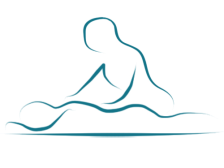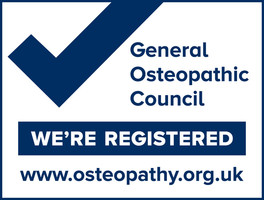FAQ's
We asked: what do you want from your osteopath?
Over the years we the osteopathic profession have asked patients, both formally and informally what they want and expect from an osteopath?
What qualifications do you have?
- Prior to 1995 osteopaths would have qualified with a diploma in osteopathy. These were four-year full time or five-year part time courses. Since this time the courses have become degree courses given by universities. It is usual now for an osteopath to have a BSC or a Masters in osteopathy. Graduate osteopaths will have had a minimum of 1000 clinical hours treating and assessing patients prior to graduating. Some osteopaths are qualified to PhD level.
I want you to have knowledge about my problem and how to treat it.
- Osteopaths are highly trained in clinical diagnostic skills for the musculoskeletal system as well as having a very good knowledge of non-musculoskeletal conditions. Armed with this knowledge we can clinically reason your condition and discuss a treatment plan with you. This may include referral for further investigations such as X-ray or scans as well as referral to a more appropriate practitioner should your condition fall outside of our scope of practice.
I want to know that the treatment is safe
- Osteopaths have a very high patient satisfaction rate. The institute of osteopathy and the General Osteopathic Council report a 96% satisfaction rate from patient reported outcome measures (PROMs) among osteopathic patients.
- Osteopathy is generally regarded as a safe treatment, although you may experience minor side effects, such as:
- Mild to moderate discomfort in the treatment area, fatigue, and depending on the area treated you may get a headache.
- These effects usually develop within a few hours but resolve within 1-2 days.
- In rare cases, serious complications have been linked to therapies involving spinal manipulation, including chiropractic and osteopathy.
https://www.nhs.uk/conditions/osteopathy/safety/
Is osteopathy properly regulated?
- By law, osteopaths must be regulated by the General Osteopathic Council (GOsC). It is an offence to call oneself or imply one is an osteopath if they are not registered.
- Osteopaths are required by law to renew their registration every year having undertaken the necessary continual professional development criteria.
https://www.osteopathy.org.uk/home/
I want to know what I can expect from an osteopathic treatment (consult)
- Osteopathy is a diverse profession, so I can only generalise when it comes to what one can expect.
In general, your first visit will take approximately one hour and will include: Taking a comprehensive case history.
- In order to pinpoint the cause of your problem / condition, we will listen to the history of your problem / condition and ask you a number of questions related to it. We will be happy to explain the questions and reasons for asking them.
Clinical Examination
- Observation of Posture and Movement
- In order to accurately assess the area to be treated, you may be asked to
remove a certain amount of clothing. You will need to wear something you are
comfortable in (sensible underwear or shorts). Patients may bring a chaperone
to any treatment.
Why do we need to assess you undressed?
- Observation: of posture and movement (looking at how you stand and move). Part of your assessment will be observations. We need to see the area causing your problem. We look for obvious deformities, changes of posture, lumps, bumps, cuts, bruises, grazes, scars, skin blemishes, swelling and discolouration.
- Movement: we will ask you to move the area causing your problem, all within the limits of pain and discomfort to assess how much you can do for yourself pain free; this can also give us an indication of the cause of the problem.
Clinical testing:
- A variety of targeted tests may be performed to determine which tissues are affected and to what extent.
- Clinical testing of muscles, joints and nerves (looking for possible causes or consequences of your problem).
- We will give you a full explanation of findings and an honest opinion of what we have found clinically.
- We will offer treatment and recommendations or referral (as appropriate).
On occasion, in order to arrive at a working diagnosis, more investigations may be necessary, such as, X-Ray, Scans, Blood tests or an opinion by your GP or a specialist.
How is the time allocated? I’ve been to osteopaths who say the treatment time is 30 minutes then I’m out of the clinic after 20 minutes.
- In the initial consult, most of the time is given over to case history taking, clinical investigations and assessment, with time allowed for formal treatment if appropriate. As you can imagine, some cases are more complex than others. Depending on the complexity of the case, we make take more or less time to carry out our investigations. We also have to write up our notes within the time allowed.
- For follow up treatments; we will ask about how you felt in the 24 hours after treatment and in the intervening time between treatments, as well as asking about changes in presenting symptoms. We will re-examine the area to be treated and offer treatment as necessary. We also have to write up our notes within the time allowed.
- Treatments may expand or contract depending on what is necessary by way of treatment. You are allocated a time slot. In discussion with you we will do what is necessary in that time slot. Some people react quicker than others when being treated. We take care not to over treat. The average time taken for an initial consult is 45-60 minutes. The average time for a follow up appointment is 20-30 minutes.
Is treatment painful?
- Osteopathy is generally regarded as a safe treatment, although you may experience minor side effects, such as:
- Mild to moderate discomfort in the treatment area, fatigue, and depending on the area treated you may get a headache.
- In rare cases, serious complications have been linked to therapies involving spinal manipulation, including chiropractic and osteopathy.
- Provocative clinical testing by its nature is designed to recreate the problem. This type of testing is sometimes necessary to confirm the diagnosis, and may cause discomfort.
- Patients with certain conditions, may experience short duration soreness and or stiffness after receiving treatment. These effects usually develop within a few hours but resolve within 1-2 days. This is a normal treatment reaction and I will advise patients how to manage this by giving self-care advice.
- I ask that patients let me know if I am causing discomfort during treatment and I will adapt the treatment to suit.
What exactly is osteopathy?
- The following is a direct quote from the GOsC. https://www.osteopathy.org.uk/visiting-an-osteopath/about-osteopathy/ “Osteopathy is a system of diagnosis and treatment for a wide range of medical conditions. It works with the structure and function of the body and is based on the principle that the well-being of an individual depends on the skeleton, muscles, ligaments and connective tissues functioning smoothly together”.
- …..”Osteopaths work to restore your body to a state of balance, where possible without the use of drugs or surgery. Osteopaths use touch, physical manipulation, stretching and massage to increase the mobility of joints, to relieve muscle tension, to enhance the blood and nerve supply to tissues, and to help your body’s own healing mechanisms. They may also provide advice on posture and exercise to aid recovery, promote health and prevent symptoms recurring”.
- Osteopaths treat the whole body. We treat a wide variety of conditions, and people from all walks of life and from babies to those in their sunset years of life. We are probably famous for treating backs but that’s not all we treat. If you have aches, pains, strains, sprains, pain of arthritis, sports injuries then you should probably see an osteopath. If you’re not sure, please ask.
Is it just placebo or does it actually work?
- Great question, the answer is not a simple one. Placebo means I shall please. All practitioners try to please their patients. Placebo is traditionally thought to be an inert intervention. However, pain research literature suggest that placebo is an active intervention to decrease pain and that Manual therapists should take steps to maximise placebo responses to reduce pain.
- Depending on the therapy and the discipline, it is thought that placebo plays anywhere between 30-60% of any and all treatments including medicine and surgery.
- Osteopathic treatment is multifaceted. We use hands-on techniques which cause a mechanotransduction effect. This is a mechanical stimulus leading to a chemical response in the body. This is a physiological response, as well as neurophysiological and psychological responses that can aid the healing mechanism.
If you have a question please ask us.




